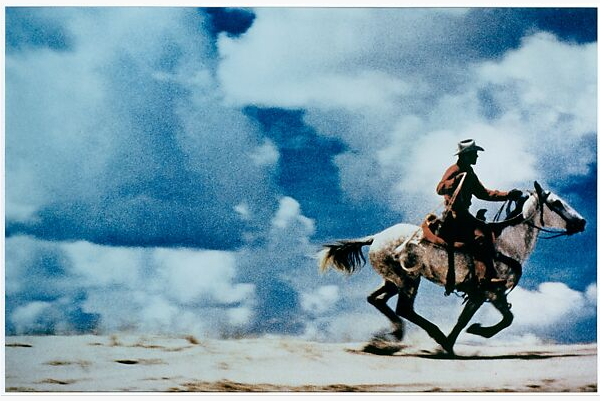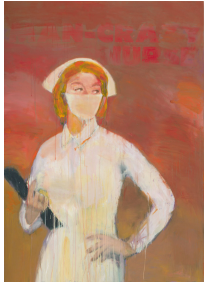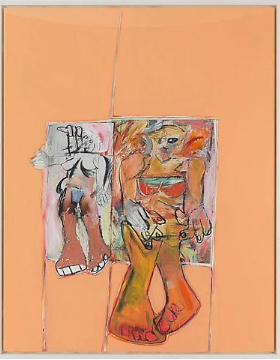Richard Prince Biography
The Early Life and Education
Richard Prince’s early years witnessed a rapid transformation in the United States. As a child in a military family that moved around, he was exposed to several different cultures and ways of contemplating. Prince left for Europe soon after graduating from high school in 1967 as a young man of eighteen. Nasson College in Maine was his next stop after returning home. He resided in Provincetown, Massachusetts, before relocating to Braintree. Robert Storr, a famous art critic and curator, was the artist’s mentor as a student at Yale University in the 1970s.
According to Prince, the iconic shot of Franz Kline was the spark that ignited his interest in New York. Prince found ideal creative soil in the city’s thriving art culture, which throbbed with the intellectual rigor of Conceptualism and the iconoclasm of Pop Art. He found his color palette in the city’s geometric architecture and chaotic vitality.
Career Beginning
In the 1970s, Prince’s creative growth peaked. Appropriation, a radical tactic that questioned conventional creative expression ideas, was his preferred production method. Using his artistic interventions—such as subtle changes to color, cropping, or framing—into rephotographs of discovered pictures from magazines, ads, and even Marlboro Man billboards, Prince prompted inquiries on context, ownership, and the power of mass-media imagery.
Marking a turning point in this regard is his 1977 series “Cowboys,” which featured rephotographed Marlboro Man ads. By removing the cowboys from their original branding setting and isolating them, Prince turned them into mysterious icons of American manhood and myth-makers. Both critics and audiences were divided by the series, which launched Prince to stardom globally.
Career Highlights
Prince has always broken new ground, exploring various media and themes. Using appropriated jokes painted on monochrome backdrops, his “Jokes” series (1986–1992) questions the role of humor in culture and art. In the ’80s and ’90s, he got into painting, producing pieces like “Sister Kate” (1989), a massive copy of a Patti Smith album cover. This painting gave new visual strength and placed it in a different context.
In the 2000s, Prince took his investigation of appropriation to a new level with his “Nurse Paintings” series. This series featured stolen images of scantily dressed nurses from tabloid publications. The pieces pushed the limits of artistic discourse and ignited passionate discussions over gender roles, morality, and appropriation ethics.
What Richard is Known For
Using Cross-Cultural Symbols
People admire Richard Prince’s ability to use cultural symbols in new ways, breaking the lines between high and low culture. Changing the ideology of what is considered art, his works make viewers question how representation functions in modern culture.
By using the same clichés from advertising and mass media in the show, Prince makes people think about how these messages are made up. When Prince writes, he picks well-known cultural symbols, like the lone cowboy or the sexy nurse.
Landmark Illustrations: Several landmark points illustrate Richard Prince’s influence on art. His famous “Cowboys” work from the 1980s shook up traditional ideas of who wrote something. This work made him a key figure in modern art. Works such as “Untitled (Cowboy),” which delve into the concept of domain authority in the digital era, have received immense praise.
Chosen Work: Prince’s methods of appropriation have led to several cases with mixed results. Because he borrows, samples, or copies other people’s work, the laws and art worlds have had to rethink who owns images and who has the right to reproduce them.
In the same way that Marcel Duchamp’s “chosen” mass-produced things became art by being in the right place. Prince’s use of other artist’s work has made people think about what it means to own something.
Pictures Generation: Because Prince used the same techniques of copying and media sources, he quickly became part of the “Pictures Generation.” Artists like Cindy Sherman and Sherrie Levine also examined how general images could convey meaning. Prince broke down the rules of advertising and commercial photography to show how they used the same images repeatedly.
Artistic Style
Prince’s artistic style defies easy categorization. He is often labeled an appropriationist, yet his artistic interventions go beyond mere copying. He manipulates, recontextualizes, and infuses humor into his appropriations, prompting viewers to consider the original image. The new context and the artist’s hand created something entirely new. His work is infused with a sly wit and provocation, inviting viewers to participate in meaning-making.
Prince’s artistic style combines appropriation and deconstruction. His adeptness at extracting images from mass media challenges established norms. His work reflects his inclination to question authorship and authenticity in art.
Notable Work
| Untitled (Cowboy) | This iconic photograph features a lone cowboy against a vast backdrop, symbolizing the paradox of isolation coexisting with intense interconnectivity. The image captures the essence of Prince’s exploration of American mythos. |
| Spiritual America | A controversial yet influential work, “Spiritual America,” features a photograph of a young Brooke Shields, challenging societal norms and sparking critical discourse on the boundaries of art and ethics. |
| Nurse in Hollywood | This series appropriates and recontextualizes the covers of pulp fiction novels featuring nurses, offering a commentary on gender roles, stereotypes, and societal expectations |
| Gangs | Prince delves into the world of gang culture, capturing and reinterpreting images from crime scenes. This series challenges the viewer’s perception of violence, identity, and the portrayal of real-life events in art. |
| Hoods | Prince delves into the world of gang culture, capturing and reinterpreting images from crime scenes. This series challenges the viewer’s perception of violence, identity, and the portrayal of real-life events in art. |
An Impact of Richard Prince on the Art World
Richard Prince’s legacy is measured not only by the artworks he created but also by his impact on subsequent generations of artists. His trailblazing approach to appropriation and recontextualization paved the way for new forms.
Beyond the canvas, Richard Prince’s impact extends to shaping the discourse surrounding copyright, fair use, and the intersection of art and commerce. His pioneering efforts in appropriating and transforming mass media imagery have inspired subsequent generations of artists to challenge the status quo. Prince’s unique vision resonates, leaving an enduring legacy in contemporary art.
He has been hailed as a visionary and a provocateur. He ignites debates about authorship, the nature of originality, and the role of mass media in our lives. His work has challenged the very definition of art, opening doors for younger artists to explore appropriation and its possibilities.
While his work has sparked controversy and criticism, its undeniable power lies in its ability to evoke dialogue and re-examination. Prince compels us to think critically about the images we encounter daily, the narratives they construct, and the power dynamics embedded within them.
In exploring Richard Prince’s life and work, one encounters a maestro who transcends boundaries, redefining the possibilities of contemporary art. His unique perspective and ability to provoke thought make him a trailblazer in the ever-evolving landscape of artistic expression.
Follow Richard Prince on social media
Instagram: https://www.instagram.com/richardprince_official/?hl=en
Facebook: https://en-gb.facebook.com/public/Richard-Prince/



